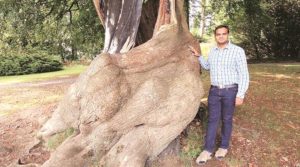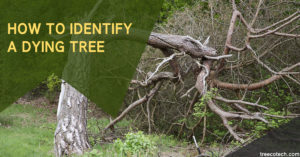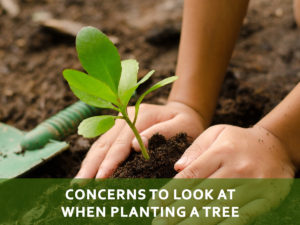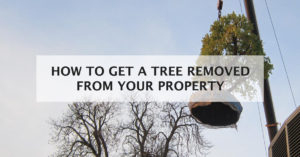
Vaibhav Raje, the only arborist in the city with a qualification from the International Society of Arboriculture in the US, and on contract with Mumbai Metro Rail Corporation Limited (MMRCL) till August this year, tells The Indian Express that development projects should incorporate as many high-value trees as possible within the site from the design stage Vaibhav Raje, the only arborist in the city with a qualification from the International Society of Arboriculture in the US, and on contract with Mumbai Metro Rail Corporation Limited (MMRCL) till August this year, tells The Indian Express, that development projects should incorporate as many high-value trees as possible within the site from the design stage, but refused to comment on any other aspect of the Aarey controversy or his own role at MMRCL. Raje runs ‘Treecotech’ in Mumbai for providing arboriculture services in India.
Is planting two new trees for every tree cut enough? Please comment on the survival rate of transplanted trees and the mechanism to be followed to increase the survival rate.
I feel that we are more focused on the outcome rather than the quality of the process required to reach those outcomes. The question you asked is of course important, but have we ever considered retaining high-value trees within our [development] projects in the first place? Do we ever talk about retaining trees or optimising the project from the design stage itself to incorporate as many high-value trees as possible within the site? Are trees being considered from Day Zero of the planning stage, and not the construction stage like always, so that the impact of construction on trees can be minimised and their benefits can be enjoyed even post-construction? Is there an ‘Arboricultural Impact Assessment’ stipulation in place for any infrastructure projects as a mandatory prerequisite prior to any approval? Is there a standard for ‘Root Protection Area’ of trees within a construction site for our cities or is there any planning legislation in place to impose such considerations on project owners locally or nationally? And lastly, do we have enough arboriculture experts and proactive people in the country to help us achieve this? Maybe this is what we need to focus on more now and perhaps also make the decision-makers aware about this. Until we are able to improve our process standards and bring about a cultural change towards managing our existing trees, talking about compensatory plantation or transplantation techniques and its survival will take us nowhere because the damage would have already been done. When appropriate trees are selected for retention, removal and transplantation based on detailed arboricultural analysis and site factors, then one can discuss better techniques for transplantation and survival chances.
The Mumbai civic body trims trees annually ahead of monsoon. How often should trees be trimmed? Should they be trimmed at a particular time of the year only?
The timing and frequency of pruning the tree depend on case-to-case basis. Ideally, not more than 25-30 per cent of the tree canopy should be pruned over a year based on its species, size and age. Right pruning cuts at right places and ability to foresee the tree form in the next few years is also quite important. In most cases, the urban street trees of Mumbai that were planted many years ago, have now started to outgrow the space that they have. The overall sub-tropical climatic condition and average high humidity in Mumbai gives us a lot of room to consider pruning times for trees. However, one should avoid harsh summer for pruning as trees become more susceptible to damage from heat stress.
Even after annual tree trimming exercise was undertaken in Mumbai, the city witnesses tree-fall incidents and accidents, leading to injuries and deaths in few cases.
Our trees face a lot of urban challenges, like constrained below-ground space for root growth, frequent excavation near trees causing damage within the critical root zone areas, underground utilities limiting root growth, ground compaction or concretisation around trees etc. All these factors actually contribute directly towards structural & physiological stability of the tree and might also be one of the reasons for tree failures. Regarding tree trimming, there is some process in place but it seems there is still a lot of scope for improvement.
How can tree-falls be averted?
In addition to the training, better planning of future tree plantation in the city, selecting the right tree species for the right place, use of advanced planting technologies for urban street trees, conducting tree risk assessment as a preventive action by identifying any structural or physiological issues in trees early on could help improve the situation. These actions together may give us some chance to reduce tree fall cases, but one cannot avert it completely.
What is the guideline to be followed for tree audit? Is the present method scientific?
Tree Audit or Tree Risk Assessment can be beneficial only if our trees are treated as an asset and not a liability. Tree Audit can occur at several levels of intensity. An initial assessment may include a ‘walk-by’ or ‘drive-by’ where trees are assessed on the move and are broadly identified for any defects or concern. After identifying the problematic trees, a detailed individual visual tree assessment is carried out where each tree is assessed in detail and all findings are recorded. Appropriate remedial measures like pruning type & its intensity, cabling/bracing, soil rejuvenation, advanced diagnosis and investigation or, depending upon the circumstances and risks associated with the tree, even removal can be suggested at this stage. The next stage may include detailed advanced diagnosis or investigation of trees that may need more attention.
source:- https://indianexpress.com/article/cities/mumbai/trees-should-be-considered-from-day-zero-of-project-planning-stage-not-construction-stage-vaibhav-raje-6056808/




 The decision of planting a tree can be a quick one but when it comes to implementation, there are a lot of things that need to be looked at. The major factors that can affect your decision to plant a tree are as below:
The decision of planting a tree can be a quick one but when it comes to implementation, there are a lot of things that need to be looked at. The major factors that can affect your decision to plant a tree are as below: